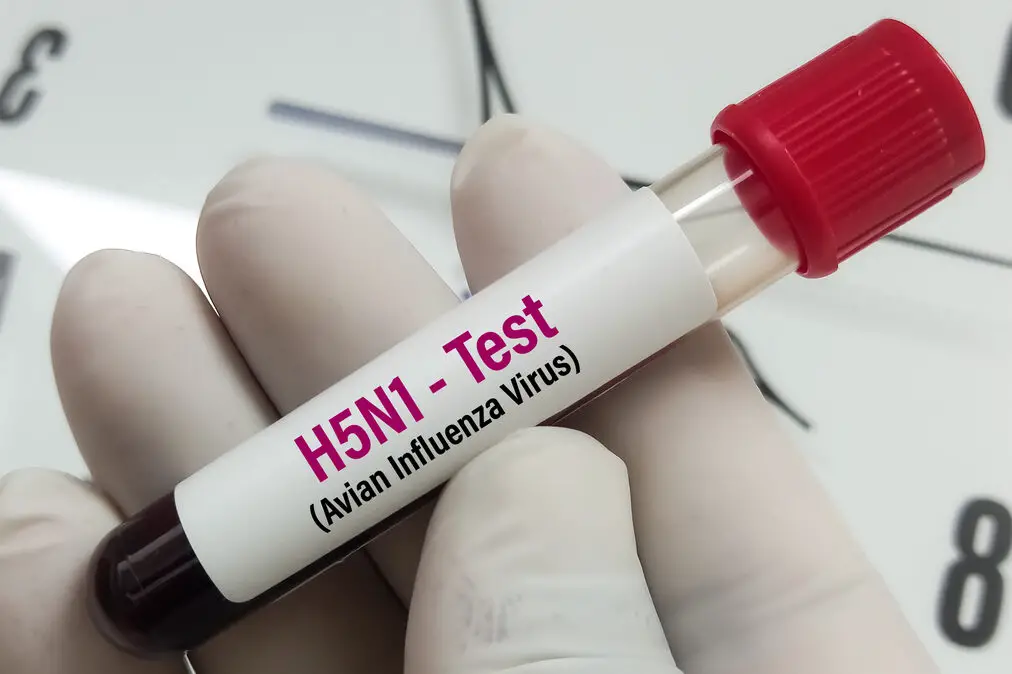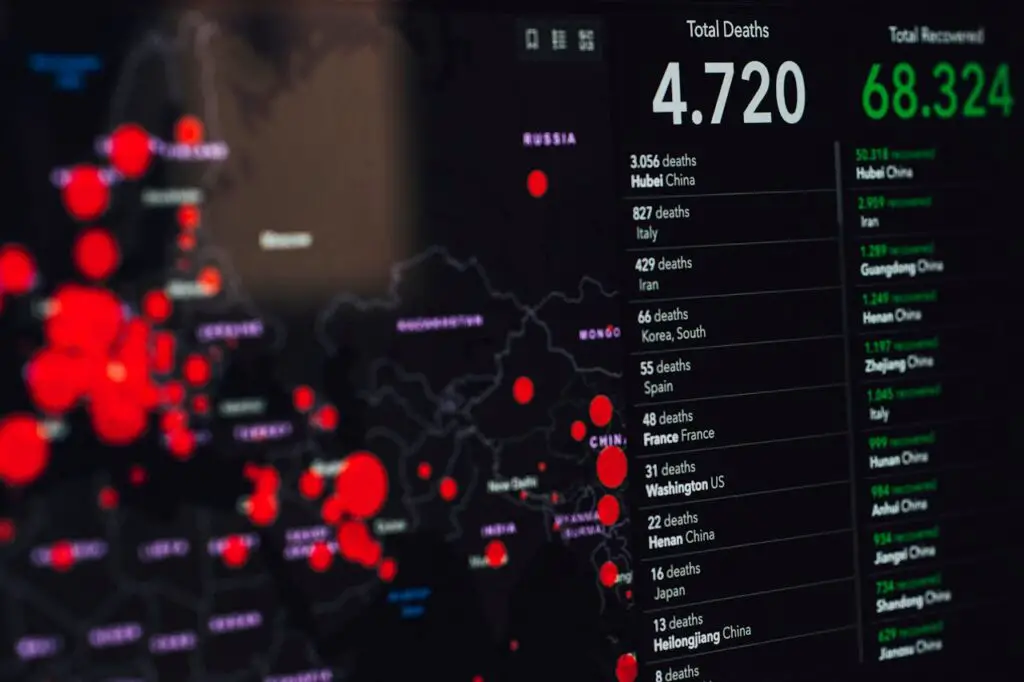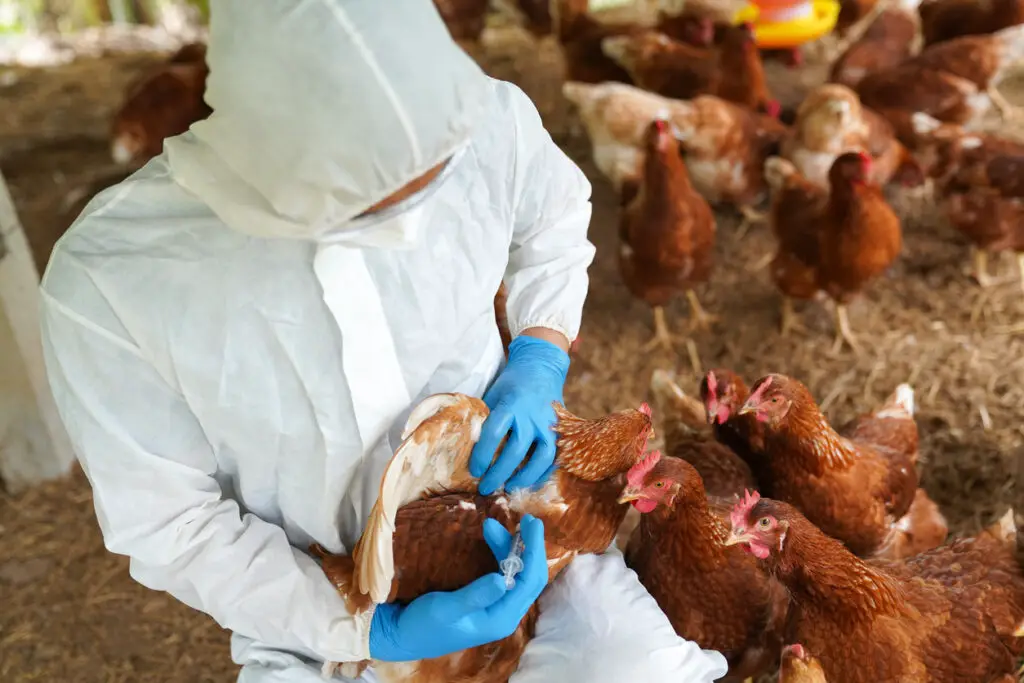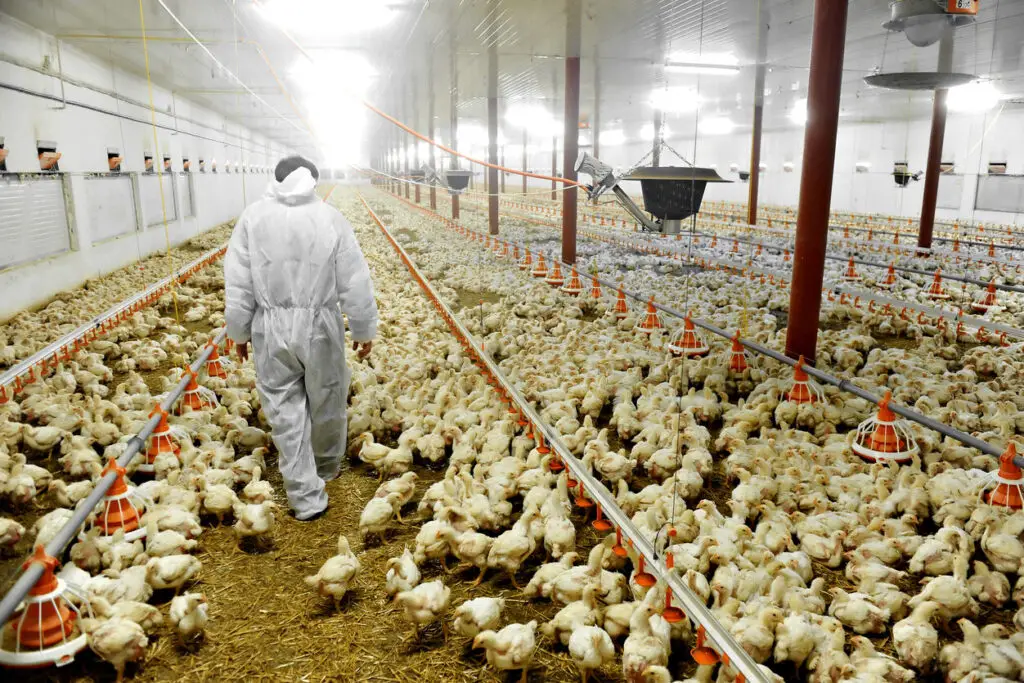1. The Virus Is Already Mutating

Avian influenza viruses, like many other viruses, have an alarming ability to mutate rapidly. Mutations can occur when the virus replicates within its host, and these mutations can result in new variants that may be more lethal or transmissible. While the current strains like H5N1 and H7N9 haven’t yet evolved to spread easily among humans, they have shown signs of adaptation. According to the Oxford Academic, even slight changes in the virus could alter its ability to infect humans, potentially making it far more dangerous.
What makes this mutation particularly concerning is that birds, particularly wild waterfowl, act as a natural host for the virus and can travel long distances, spreading it across continents. These birds are in constant motion due to migration patterns, and as they encounter new populations, the virus can adapt in unpredictable ways. Scientists are worried that the more the virus circulates among different species, the more likely it is to evolve into a form that can spread effortlessly from person to person. The rapid mutation of the virus makes it incredibly difficult to predict how the virus will behave in the future, leaving public health experts constantly on edge.
2. Past Outbreaks Have Shown How Dangerous It Can Be

When bird flu does infect humans, it can be deadly. The most infamous strain, H5N1, emerged in the late 1990s and spread across Asia. While human-to-human transmission remained rare, the virus had an extraordinarily high fatality rate—around 60% for those who contracted the virus. Although the number of human infections was relatively low compared to other flu strains, the high mortality rate was a stark reminder of the potential for disaster.
When a disease is so deadly, it becomes a global priority to contain it before it spreads. However, despite efforts to contain outbreaks, the virus continues to resurface in various parts of the world. In recent years, outbreaks of H5N1 and H7N9 have occurred in Asia, the Middle East, and parts of Africa, causing fears that these strains could eventually evolve into a form that spreads easily among humans. While H5N1 has not yet become a pandemic, its high mortality rate is a grim indicator of what could happen if the virus adapts to human transmission.
3. The Impact on the Global Economy

A major bird flu outbreak could have disastrous consequences for the global economy. The agricultural industry would be particularly hard hit, especially the poultry industry. With entire flocks of birds needing to be culled to prevent the virus from spreading, farmers would experience massive financial losses. This, in turn, could lead to an increase in the cost of poultry and egg products, affecting consumers worldwide. According to Poultry World, the poultry trade would be severely disrupted, particularly in regions that rely heavily on exports.
Beyond agriculture, other industries could suffer as well. The travel and tourism sectors might take a hit if countries impose travel restrictions to prevent the spread of the virus. People may avoid crowded areas, including airports and major tourist attractions, out of fear of contamination. These disruptions could lead to financial instability, particularly in countries that rely on trade and tourism as significant sources of revenue. As we saw with the COVID-19 pandemic, global economic repercussions can be far-reaching, and the bird flu could present similar challenges to economies worldwide.
4. It Could Infect a Wide Range of Animals

Bird flu doesn’t just affect poultry. It has the potential to infect a wide range of animals, which complicates containment efforts. Wild birds, especially waterfowl, are the primary carriers of avian influenza. These birds can travel long distances during migration, spreading the virus across vast geographic areas. Additionally, other animals, such as pigs, cats, and even some mammals, can become infected with the virus, providing more avenues for the virus to spread and mutate.
The broad host range increases the chance that the virus will adapt and evolve. In particular, pigs are of great concern because they can act as “mixing vessels” for viruses. If a pig is infected with both avian and human flu strains, the viruses can exchange genetic material, potentially creating a hybrid virus with the ability to infect humans more easily. This process of genetic reassortment, known as antigenic shift, has already been responsible for some of the most devastating flu pandemics in history. The more species the virus can infect, the greater the likelihood that it will evolve into a form that could spread globally.
5. Climate Change May Increase the Frequency of Outbreaks

The effects of climate change are far-reaching, and one of the consequences could be more frequent and widespread bird flu outbreaks. Rising temperatures, altered rainfall patterns, and changes to migratory routes all affect how birds travel and where they congregate. According to the University of Guelph, some scientists predict that climate change will shift the range of certain bird species, causing them to interact more frequently with poultry, thus increasing the risk of the virus jumping to domestic birds.
Warmer temperatures can also provide more favorable conditions for the virus to survive and spread, especially in areas where the climate has become more temperate. For example, birds that typically migrate between colder and warmer climates may find new habitats in previously unaffected areas, which could lead to the virus infecting new regions. In addition, changes to ecosystems and habitats may cause wild birds to come into closer contact with humans and farm animals, facilitating the transmission of avian flu and increasing the likelihood of new outbreaks.
6. The Potential for Human-to-Human Transmission

Although human-to-human transmission of bird flu is rare, it remains one of the most concerning aspects of the virus. If the virus were to mutate in a way that allowed it to spread more easily between people, the situation could escalate quickly. Human-to-human transmission is what enables viruses like COVID-19 and seasonal flu to spread so widely. If a more deadly strain of bird flu were to gain this ability, it could spark a pandemic of catastrophic proportions.
Even if human-to-human transmission is initially limited, the virus could evolve over time. If one individual unknowingly infects others in a densely populated area, the virus could spread exponentially. The H5N1 strain, for example, already has a high mortality rate, and scientists fear that if the virus becomes transmissible among humans, it could result in a global health crisis unlike anything seen before. The ability of the virus to mutate in unpredictable ways makes it one of the most concerning threats to global public health.
7. Limited Vaccine Preparedness

The development of a universal bird flu vaccine that works across all strains is still a long way off. While vaccines have been created for specific strains, such as H5N1, they are not 100% effective, and their production can be slow. According to NBC News, in the event of an outbreak, it could take months to develop and distribute a new vaccine tailored to the virus.
Moreover, the constant mutation of the virus means that any vaccine made for one strain may not work against another. Scientists are continually working on improving flu vaccines, but they are playing catch-up with a virus that can evolve faster than vaccine production. Even when vaccines are available, they must be manufactured in large quantities and distributed to millions of people, which can take time. As we saw with the COVID-19 pandemic, delays in vaccine distribution can lead to more infections and deaths. In the case of bird flu, this delay could prove to be catastrophic if a more deadly strain emerges.
8. Challenges in Surveillance and Early Detection

Early detection is crucial in preventing the spread of bird flu, but current surveillance systems can be inadequate, especially in remote or less-developed areas. Wild birds, for example, may carry the virus for weeks without showing any signs of illness. This makes it difficult to detect infections before they spread to domestic poultry or humans. Furthermore, some regions of the world lack the infrastructure for adequate disease monitoring and response, which could lead to delays in identifying and containing outbreaks.
Even when outbreaks are detected, the virus may have already spread too far to be contained effectively. Early surveillance efforts may be hampered by political and logistical challenges in certain regions, allowing the virus to spread undetected. Because avian influenza has the potential to spread rapidly and globally, timely and widespread detection is essential. Without it, outbreaks could quickly spiral out of control, leading to a global health emergency.
9. Limited Resources in Low-Income Countries

Low-income countries face a multitude of challenges when it comes to managing and responding to a bird flu outbreak, and these challenges could make a pandemic much more severe. Healthcare systems in these regions are often already under strain, struggling with issues like limited access to modern medical equipment, insufficient health workers, and shortages in basic medicines. These deficiencies make it much more difficult to mount an effective response to an infectious disease like bird flu. For example, a lack of infrastructure means that hospitals may be ill-equipped to handle a large influx of patients, which would put both human and financial resources under severe stress.
Additionally, poorer countries often lack the financial resources to purchase vaccines, antiviral medications, and the technology required to monitor and contain outbreaks. In such areas, surveillance systems may be weak or even nonexistent, which could delay the detection of an outbreak until it has already spread too widely. The global health community might be able to send aid in the event of an outbreak, but the time it takes for international assistance to reach affected regions could be too long to prevent the virus from spreading even further. With fewer resources and support structures in place, low-income countries are disproportionately vulnerable to the devastating effects of a potential bird flu pandemic. The World Bank estimates that direct costs from avian influenza outbreaks could lead to job losses representing about 0.2% of the global workforce, significantly affecting low-income countries where poultry farming is more labor-intensive.
10. The Fear of a New “Super Strain” of Bird Flu

One of the most frightening possibilities scientists are concerned about is the emergence of a “super strain” of bird flu, a virus that could combine the worst traits of multiple flu strains and become a highly contagious, highly lethal threat. This fear stems from the phenomenon of “antigenic shift,” where viruses exchange genetic material when they infect the same host, such as a pig or a bird that has been exposed to both human and avian flu strains. This genetic exchange can lead to a new strain that’s more potent and capable of spreading more easily among humans.
Historically, antigenic shift has been responsible for some of the most devastating flu pandemics, including the Spanish flu of 1918, which killed millions of people worldwide. A similar scenario could unfold with bird flu, where a combination of existing strains might create a new virus that the global population has little immunity against. If this “super strain” were to emerge, it could trigger a pandemic of unprecedented scale and severity, with the potential to spread rapidly through human populations and overwhelm public health systems. Scientists are particularly concerned because there is no way to predict when such a strain might emerge, and when it does, it could potentially evade existing vaccines, rendering current prevention methods ineffective.
11. Uncertainty About Effective Treatments

While there are existing antiviral drugs like Tamiflu that can be used to treat influenza infections, their effectiveness against bird flu is still uncertain. For one, these antivirals are most effective when administered early, and during a pandemic, getting them to those who need them in time could prove challenging. Moreover, the bird flu virus, like many other viruses, can evolve and mutate over time, which could result in strains that are resistant to the antiviral drugs currently available. According to PubMed Central, this would leave healthcare providers with few treatment options to combat the virus and could lead to an increased number of deaths.
Currently, there is no universal cure or treatment that works across all strains of bird flu. This uncertainty is a major reason why scientists are so concerned. Even though vaccines have been developed for certain strains, like H5N1, they are specific to that particular virus, and there’s no guarantee that they would be effective against a new, mutated strain. Additionally, the sheer scale of a potential pandemic could overwhelm hospitals and health services worldwide, making it difficult to treat the number of people who could become infected. Researchers are working on developing better antiviral medications and vaccines, but these treatments are still in the experimental phase and may not be ready in time to prevent widespread harm if a more dangerous strain of bird flu emerges.
12. Potential for Widespread Panic and Social Disruption

In the event of a bird flu pandemic, the consequences could extend far beyond health, with significant social and psychological impacts. The fear of a rapidly spreading and potentially deadly disease could lead to widespread panic. People may begin hoarding supplies, such as food, water, and medical products, which could cause shortages and create instability within affected regions. The fear of contracting the virus could prompt individuals to avoid public spaces, leading to a decline in consumer activity and disruption of normal daily life.
Governments might enact strict measures like quarantines, curfews, and travel bans to try to contain the virus. These measures, while necessary, could lead to further disruption of daily life. Businesses may close, schools may be canceled, and people may be forced to stay at home. Social isolation and the fear of infection could lead to a mental health crisis, as people experience anxiety, depression, and uncertainty about the future. The economic repercussions of these measures would be felt globally, as trade routes are disrupted, businesses are forced to shut down, and tourism takes a massive hit. A bird flu pandemic has the potential to unravel societies in more ways than just through illness, affecting everything from personal well-being to the global economy.
13. The Unknowns of Future Strains

Despite years of research and surveillance, much of what lies ahead for the bird flu virus remains unknown. Scientists track and study existing strains of the virus and can predict some aspects of its evolution, but they cannot anticipate every possible mutation. The virus could evolve in ways that make it more difficult to track or more dangerous to humans. According to Becker’s Clinical, it could become more transmissible among people, leading to higher rates of human infection, or it could become more resistant to vaccines and treatments, complicating efforts to control it.
One of the major concerns is that future strains may be able to evade immunity developed from previous exposure to other flu viruses or vaccines. The current vaccines may not work if the virus mutates in a way that makes it unrecognizable to the immune system. This unpredictable nature makes planning for future outbreaks incredibly difficult. The global health community is doing its best to stay ahead of potential threats by improving surveillance systems, researching vaccines, and developing antiviral drugs, but the unpredictable nature of the virus means that we can never be fully prepared for the next strain. The unknowns of future strains create an atmosphere of constant vigilance, where health officials must always be ready for the possibility that the virus could take a turn for the worse at any time.


